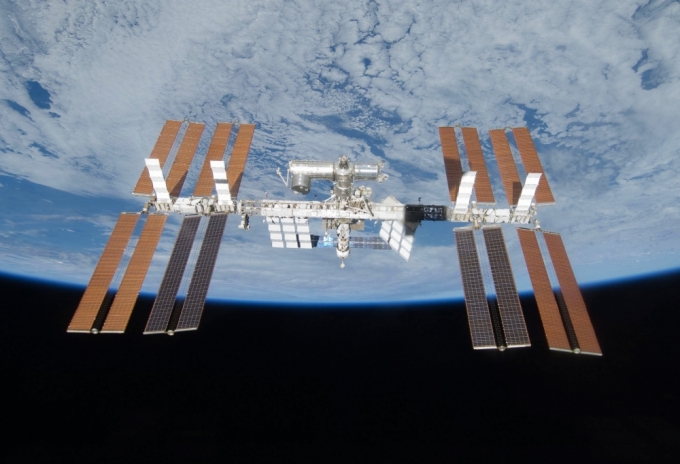Mechanical Engineering faculty members Eckart Meiburg and Paolo Luzzatto-Fegiz are intrigued by sediment transport, particularly the forces that cause the attraction between tiny discrete sediment particles in moving fluid. Fueled by a recent grant from the National Science Foundation (NSF) and the Center for the Advancement of Science in Space (CASIS), the researchers will investigate one of Earth’s most basic terrestrial phenomena…sans Earth.
“We’re trying to understand some fundamental processes that govern the transport of sediment,” said Meiburg, whose specialties lie in the area of fluid dynamics and transport phenomena.

Pictured: Luzzatto-Fegiz (left) and Meiburg. Credit: Sonia Fernandez, UCSB
According to Luzzatto-Fegiz, who studies fluid mechanics, the particular phenomenon they are interested in — the electrostatic forces that attract these solid particles together in fluid — are difficult to study because they are largely obscured by gravity.
“For example, when you have rivers that send sediment to the ocean, the sediment is made up of particles of clay, sand and other matter,” he said. “And as these particles sink into the ocean, they very slowly come together, due to some very weak, but very important electrostatic forces.” These forces, in part, are behind the cycle of nutrients in the ocean, or the accumulation of minerals.
“However, if you want to try to measure these forces in the lab, that’s very hard to do, because you can’t get a tank that’s deep enough to experiment,” Luzzatto-Fegiz explained.
Enter the International Space Station (ISS), the extraterrestrial research vessel in a constant state of free fall around the planet — perfect for eliminating at least most of the gravity that would affect sediment transport on Earth.
The experiments themselves — designed by Meiburg and Luzzatto-Fegiz to be sent into space and run by astronauts — are fairly straightforward. Cameras will be employed to monitor the different particles as they interact with one another in fluid in near-zero gravity. Light shone at and through the setups will help the researchers track the motion and observe the density of these particles. A parallel mock-up of the experiment will be built on Earth to help the researchers understand what to expect.
The project, formulated in response to a solicitation from the NSF to study fundamental fluid phenomena on the ISS, is expected to take about two years.

The International Space Station, image courtesty of NASA.
